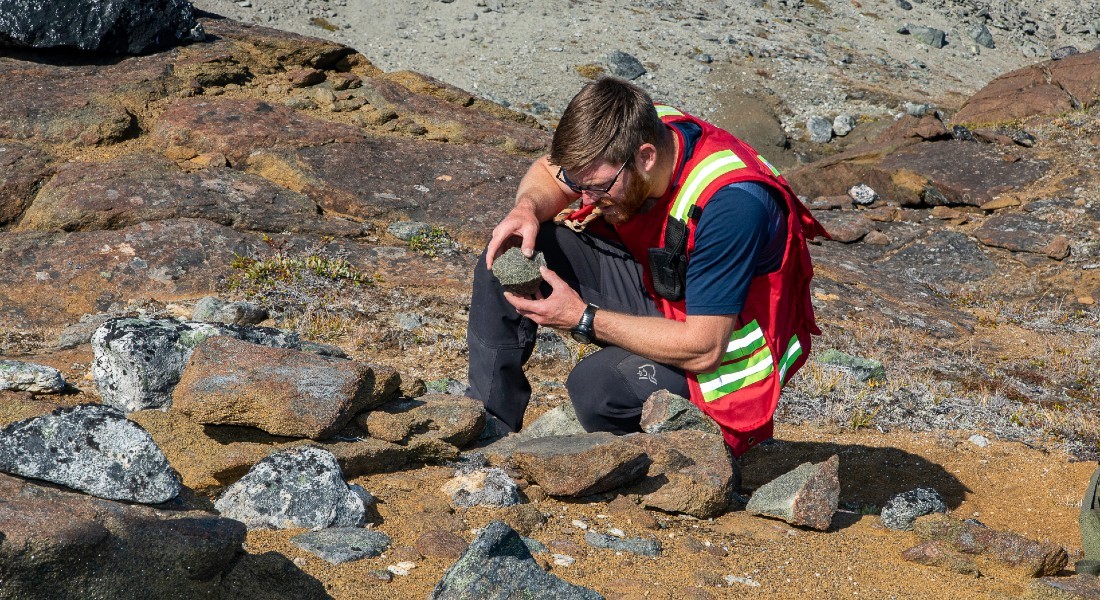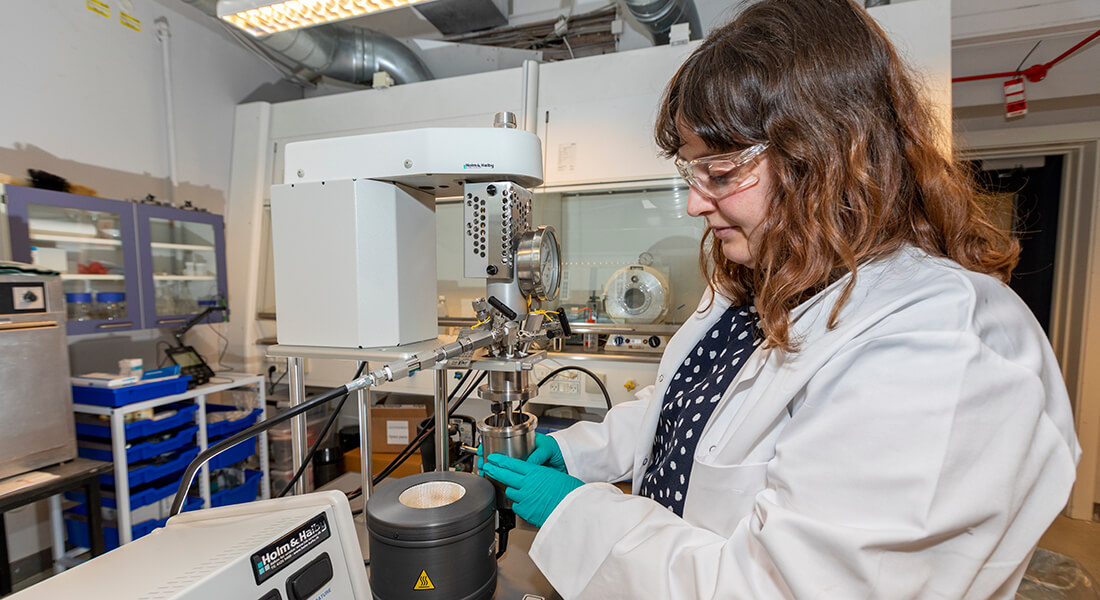The mineral olivine can extract CO2 from the atmosphere and store it in stabile carbonate minerals

The mineral olivine is mainly found as part of the rock peridotite, which constitutes 80% of the Earth’s volume. Olivine is mostly found deep within the Earth but is pushed to the Earth’s surface by tectonic processes. Weathering of olivine caused by interaction with the wind and water results in the olivine breaking down and releasing magnesium to the water, which can then react with atmospheric CO2 to form a stable magnesium- and CO2 rich mineral called magnesite. The formation of magnesite therefore captures and store, or ‘lock’, the CO2 in the structure of minerals and this chemical process consequently removes CO2 from the atmosphere.
Can solve the current climate crisis
Observations from Oman show that 1000 kg of olivine can capture up towards 600 kg CO2 from air, and if you could add just one weight percent of CO2 (relative to the mass of peridotite) to the peridotite found in Oman, you could solve the current climate crisis. Thus, theoretically, one could solve the climate crisis purely by using this mineral to capture and store excess atmospheric CO2. The question is whether this theoretical scenario can be implemented on a large scale, whether the processes controlling weathering of olivine can be optimized for industrial use, and whether the weathering reaction timescale is fast enough to meet our needs.
In this project, we work on recreating the natural process in which CO2 is extracted from the atmosphere by reaction with olivine. To do this, we run experiments in the laboratory where we let olivine react with CO2 and water at various temperatures and CO2 concentrations.

These experiments allow us to study the natural weathering process of olivine and gives us the opportunity to evaluate the potential for use of such processes in the Danish industry. If we can identify the optimal conditions for when olivine dissolves and magnesite is formed, and adapt these to match the industrial environment, such as conditions found in the chimneys from powerplants, we could potentially stop the emission of CO2 from such plants without affecting the power production. Olivine is therefore an important tool to potentially contribute to the solution and mitigation of our climate crisis in the future.
Olivine has an enormous potential to extract CO2 from the atmosphere. It is basically so unstable at the temperatures and the pressure we experience at the Earth’s surface, so it quickly triggers a chemical reaction which forms CO2-rich minerals
We are a 100 percent sure, that CO2 from the atmosphere can be captured during the weathering of olivine and formation of carbonate minerals, especially since the process already occurs in the nature. But we must find a way to optimise this process and learn whether this process can be implemented on an industrial scale.
The potential of using geological processes and materials to capture excess atmospheric CO2 is huge and there is something beautiful in the fact, that the nature is offering us solutions to save itself from the mistakes of humans. We just have to find the right key to the solution.
Contact
 Maja Bar Rasmussen
Maja Bar Rasmussen
mr@ign.ku.dk
+45 35 32 88 87
Participants in the project
Maja Bar Rasmussen
Postdoc, IGN
Kristoffer Szilas
Lektor, IGN
Peter Kelemen
Professor, Columbia University
The project is financed by

Project period: 2021 til 2024
